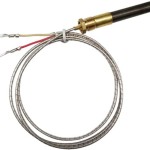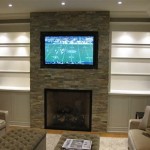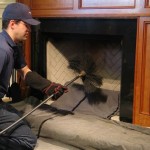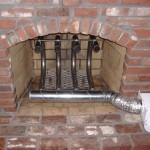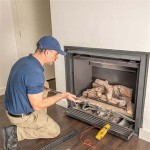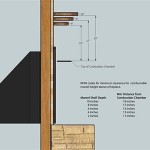Mounting a TV Above a Gas Fireplace Without a Mantle: Considerations and Best Practices
The integration of a television above a gas fireplace has become a common design choice in contemporary homes, offering a focal point for entertainment and visual appeal. However, installing a TV above a gas fireplace without a mantle introduces complexities related to heat management, viewing angles, and aesthetic integration. This article aims to provide a comprehensive overview of the key considerations and best practices for successfully mounting a TV above a gas fireplace lacking a traditional mantle.
Understanding Heat Concerns and Mitigation Strategies
The primary challenge associated with mounting a TV above a gas fireplace stems from the heat generated by the fireplace itself. Electronic components are sensitive to temperature fluctuations, and excessive heat exposure can significantly reduce the lifespan and performance of a television. The absence of a mantle exacerbates this issue, as the mantle typically acts as a shield, deflecting heat away from the wall above the fireplace. A mantle's projection helps disrupt the rising heat plume, thus protecting the electronics above. Without it, all mitigation strategies become critical.
One crucial factor to consider is the BTU (British Thermal Unit) output of the gas fireplace. Higher BTU ratings indicate a greater amount of heat produced. It is essential to consult the fireplace manufacturer's specifications and guidelines to determine the minimum safe distance between the fireplace and any combustible materials, including electronic devices. These guidelines will often provide specific vertical clearance requirements.
Several strategies can be employed to mitigate heat-related risks. First, a recessed niche can be constructed above the fireplace to house the television. This niche should be adequately insulated with materials rated for high-temperature environments. Insulation can help to reduce the amount of heat that reaches the TV.
Second, a deflector shield can be installed above the fireplace to redirect heat flow away from the TV. These shields are typically made of metal and are designed to be aesthetically unobtrusive. The material must be thermally conductive enough to disperse heat, especially if the shield is mounted close to the fireplace opening.
Third, a ventilation system, often involving small fans, can be incorporated to circulate air around the TV and prevent heat from accumulating. These fans should be chosen for quiet operation and can be discreetly installed within the recessed niche or behind the television. The placement of the fans and their CFM (cubic feet per minute) rating are important for effective cooling and should be proportional to the enclosure size.
Continuous monitoring of the temperature above the fireplace is highly recommended. A simple digital thermometer placed near the TV can provide real-time temperature readings, allowing for adjustments to fireplace usage or the implementation of additional cooling measures if necessary. Ideally, the temperature should remain below the TV manufacturer's recommended operating temperature range, typically found in the product specifications.
Finally, consider the type of gas fireplace. Direct-vent fireplaces are generally safer for TV installations because they vent exhaust gases directly outside, reducing the amount of heat radiated into the room. Vent-free fireplaces, on the other hand, release combustion byproducts into the living space, which can contribute to increased heat and humidity levels, potentially posing a greater risk to electronic devices. Vent-free fireplaces also require proper ventilation of the room to maintain acceptable air quality levels.
Optimizing Viewing Angles and Ergonomics
Viewing angle is another critical aspect to address when installing a TV above a gas fireplace without a mantle. The height of the television relative to the seating area significantly impacts viewing comfort and ergonomics. A TV mounted too high can lead to neck strain and an uncomfortable viewing experience. The absence of a mantle further complicates this issue, as it provides no visual reference point for determining optimal TV placement.
The ideal viewing height is generally considered to be when the center of the TV screen is at eye level when seated. This ergonomic principle helps minimize neck strain and ensures a comfortable viewing experience. However, when mounting a TV above a fireplace, achieving this ideal height is often impossible.
To mitigate the potential for neck strain, a tilting wall mount is highly recommended. A tilting mount allows the TV to be angled downward, compensating for the elevated viewing position. The amount of tilt required will depend on the height of the TV and the distance from the seating area. A general rule of thumb is to aim for a viewing angle that is no more than 15 degrees above horizontal.
The size of the TV should also be considered in relation to the viewing distance. A larger TV may be necessary to compensate for the increased viewing distance resulting from the elevated mounting position. Online calculators and guidelines are available to help determine the appropriate TV size based on viewing distance.
Before permanently mounting the TV, it is advisable to temporarily position it at the desired height and angle to assess the viewing experience from different seating locations. This allows for adjustments to be made before committing to the final installation.
Furthermore, glare from windows or other light sources can be exacerbated by an elevated TV position. Consider the room's ambient lighting conditions and the potential for glare before mounting the TV. Adjusting window coverings or repositioning seating areas may be necessary to minimize glare.
Aesthetic Integration and Cable Management
Beyond functional considerations, the aesthetic integration of the TV into the overall design of the room is crucial. Mounting a TV above a gas fireplace without a mantle presents unique challenges in terms of creating a visually appealing and cohesive look. The absence of a mantle can leave the TV looking awkwardly placed or disconnected from the fireplace.
One approach is to create a custom surround around the fireplace and TV. This surround can be constructed from various materials, such as wood, stone, or tile, and can be designed to seamlessly integrate the two elements. The surround can also incorporate built-in shelving or storage to further enhance the functionality and aesthetic appeal of the area.
Another option is to paint the wall behind the fireplace a contrasting color to create visual interest and define the focal point. This can help to draw attention to the fireplace and TV while minimizing the impact of the missing mantle. The color should complement the existing décor and create a cohesive look.
Cable management is essential for maintaining a clean and uncluttered appearance. All cables should be concealed within the wall to avoid unsightly wires hanging down. This can be achieved by running the cables through conduit or using in-wall cable management kits. Ensure that the cables are rated for in-wall use and comply with local building codes.
The power outlet for the TV should be located behind the TV to minimize visible wires. If a power outlet is not already present, it may be necessary to hire a qualified electrician to install one. It is crucial to follow all electrical safety guidelines and regulations when working with electrical wiring.
Consider the style of the TV mount itself. Low-profile mounts are ideal for creating a flush appearance, while full-motion mounts offer greater flexibility in terms of viewing angles. The choice of mount will depend on the desired aesthetic and the functional requirements of the installation.
Finally, the overall design of the room should be considered when choosing the size and style of the TV. A TV that is too large or too small for the space will look out of proportion and detract from the overall aesthetic appeal. The style of the TV should also complement the existing décor and create a cohesive look.
By carefully considering these factors and following best practices, it is possible to successfully mount a TV above a gas fireplace without a mantle while creating a visually appealing and functional focal point for the living space.

Can I Mount My Tv Above The Fireplace

Mounting Your Tv Above Fireplace

Can I Mount My Tv Above The Fireplace

Mounting Your Tv Above Fireplace

Mounting Your Tv Above Fireplace

3 Myths About Mounting Tvs Over Fireplaces Monmouth County

Wondering How To Mount A Tv Over Fireplace Without Mantel We Inset 60 Lg And Three Speakers Above Wall Remodel

12 Trendy Ideas Of A Fireplace Without Mantle For Minimalist Look La Urbana

5 Ways To Protect Your Tv From The Heat Of Fireplace Tips

Can I Hang A Tv Over My Fireplace Woodlanddirect Com

